I’m not asking the question, “What is good about weeds?” Here I’m listing six ways in which weeds are good.
By definition, weeds are plants that we don’t want wherever they are growing. But in the absence of plants that we do want in those spots, it’s better to have weeds than nothing, than bare ground. Here is why.
1. Erosion prevention
If your land has any slope, then weeds will keep the dirt in place. I have an opportunity to watch this in action every winter as my yard is filled with tall weeds whereas just over the fence is a horse corral of almost bare dirt because the horses have eaten all palatable plants.
Every year, the rains wash the soil in the horse corral down the hill, and my neighbor has to periodically get the tractor out and haul the soil back up the hill in order to maintain the integrity of the fences. But on my weedy side of the fence, no soil moves.


2. Prevent compaction
Weeds provide a buffer between your feet and the dirt, or a tractor’s tires and the dirt, which would otherwise crush the healthy structure of the dirt into a dense, concrete-like substance.
I can see this on the walking paths in my yard. Even between my rows of vegetables, I either keep a thick layer of wood chips or I allow some weeds to grow in order to protect the dirt below from the full weight of my footsteps.
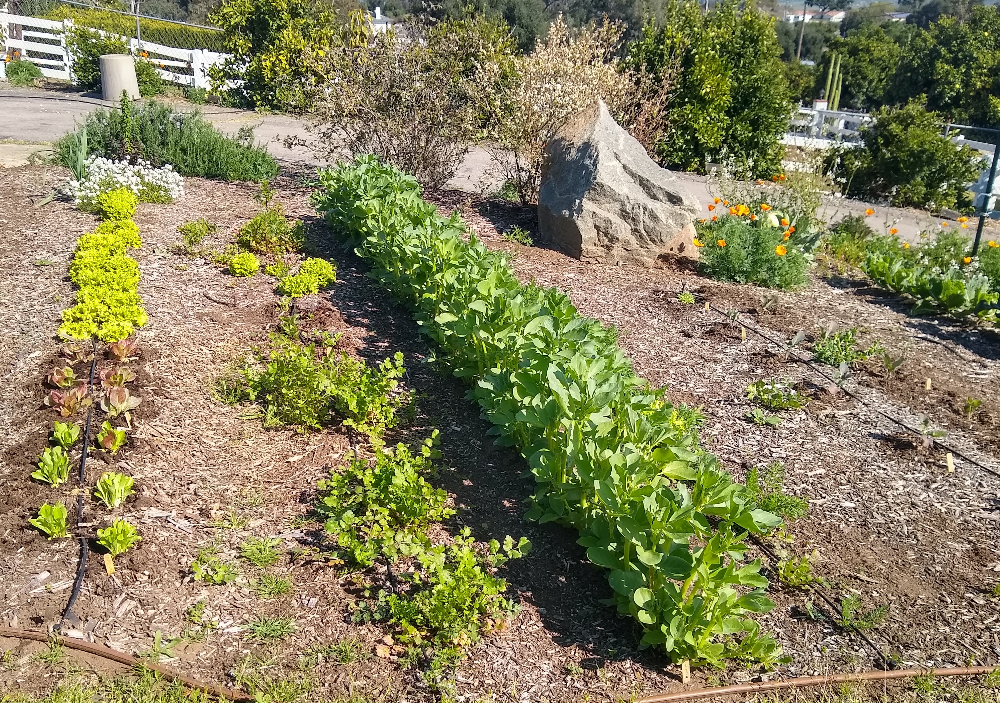
3. Enhance aeration
Very closely related is the benefit of weeds enhancing aeration of the soil. Especially during a wet winter, weeds can help pump water out of the dirt and allow air in. This prevents the dirt from being held in a waterlogged state. Waterlogged, soggy dirt is a fatal environment for many plants, particularly avocado trees, whose roots have an exceptionally high need for oxygen. (See more on this in “Root Asphyxia and Irrigation Management in Avocado Orchards” by Ferreyra et al.)
Also, through the growth of their roots, weeds forge tunnels in the soil, and once the weeds and roots die, those roots decompose but the tunnels remain as spaces for air.
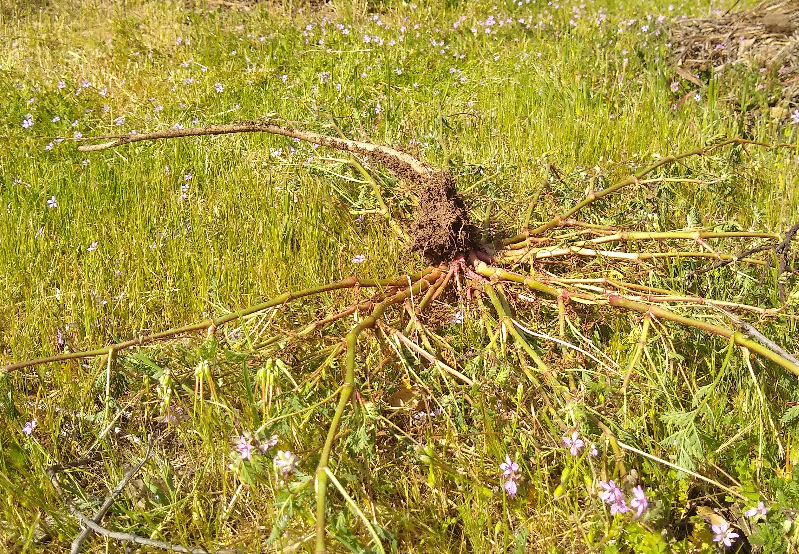
But rather than pulling weeds out of the ground, if I need to remove them I usually “cut them off at the waist.” (More on what I mean by that in this post: “How to outsmart garden weeds.”)
4. Build soil fertility
The fertility of a soil is created naturally through plants growing up and dying in it over the course of many years. Think of a volcano: There are no plants growing where lava has recently cooled, but as you get farther away – in space or time – more and more plants find that earth hospitable, and the plants gets bigger and more diverse.
The cycle of plants living and dying, and animals eating parts of the plants and themselves living and dying, over time creates a higher ability of the dirt in that place to grow future plants.
Weeds may not be your favorite plants but they are nevertheless building soil fertility as they grow up and die off, and so they are preferable to having no plants growing in a patch of dirt.

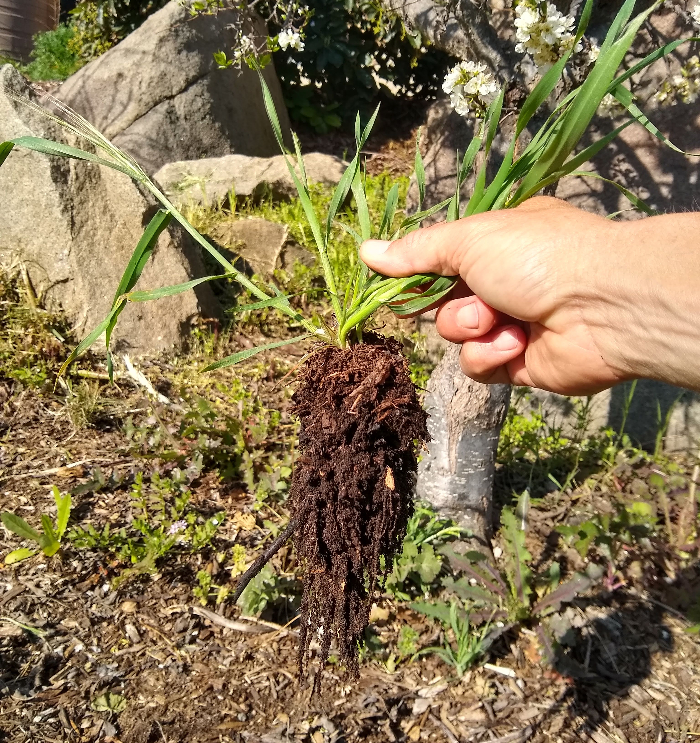
“A lot of people don’t like weeds. Well, I love weeds,” said Bob Cannard. He is a farmer up in Northern California who is well known for working together with weeds rather than seeing them as an enemy. (Watch a video with Cannard here.)
5. Grow beneficial insects
Every time I mow the weeds I see lady bugs and spiders and other insects flutter off ahead of my mower. And behind me on the mown path, scrub jays swoop down to harvest the worms and other critters that have been revealed by my mowing.
Weeds can act as an insectary, a nursery for growing beneficial insects and a spectrum of small animals that make your yard’s ecosystem healthier and more in balance.
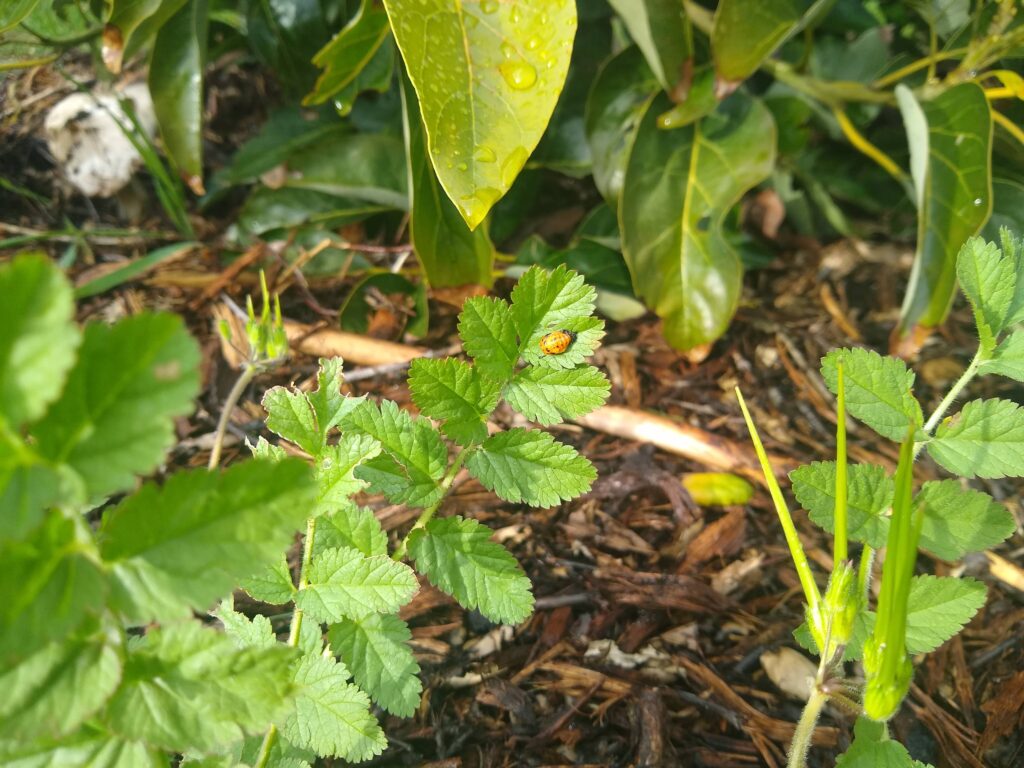
Because of this, I never mow my entire yard at once anymore. I mow in small sections so the little animals always have a nearby place of refuge.
I also mow or weed whack at a higher level than I used to. Low mowing reduces the habitat for insects, and it also selects for low-growing weeds, thereby reducing the diversity of weed species. I want many different kinds of weeds growing in my yard, not just a few low-growers like filaree and mallow and capeweed.
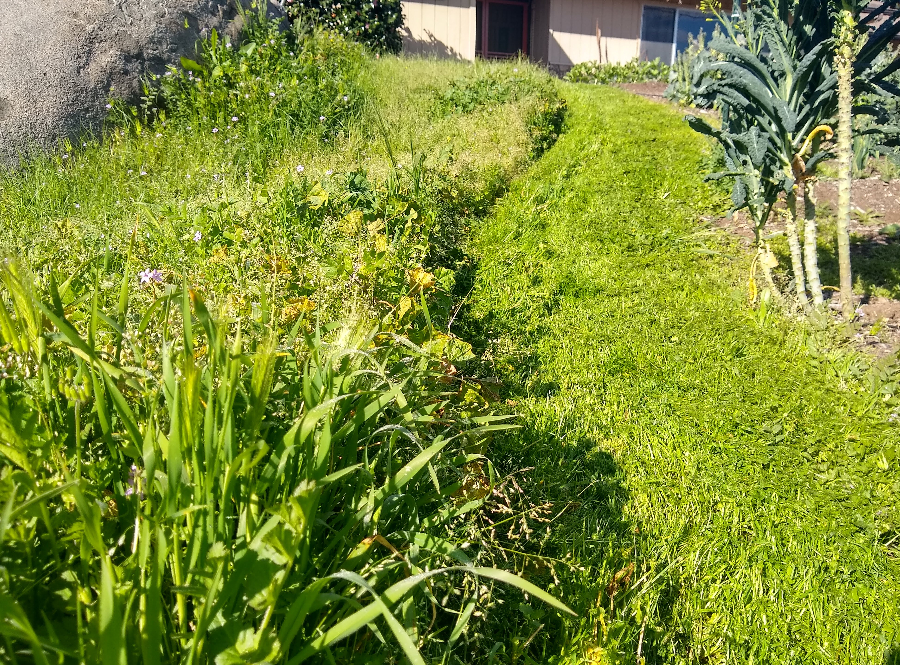
6. Feed chickens . . . and the family
Finally, weeds are food for many. Beyond insects, they’re also food for wild birds. And my chickens eat many of the weeds that grow in my yard. I let them forage on their own sometimes, and at other times I harvest plants like thistle to bring to them.
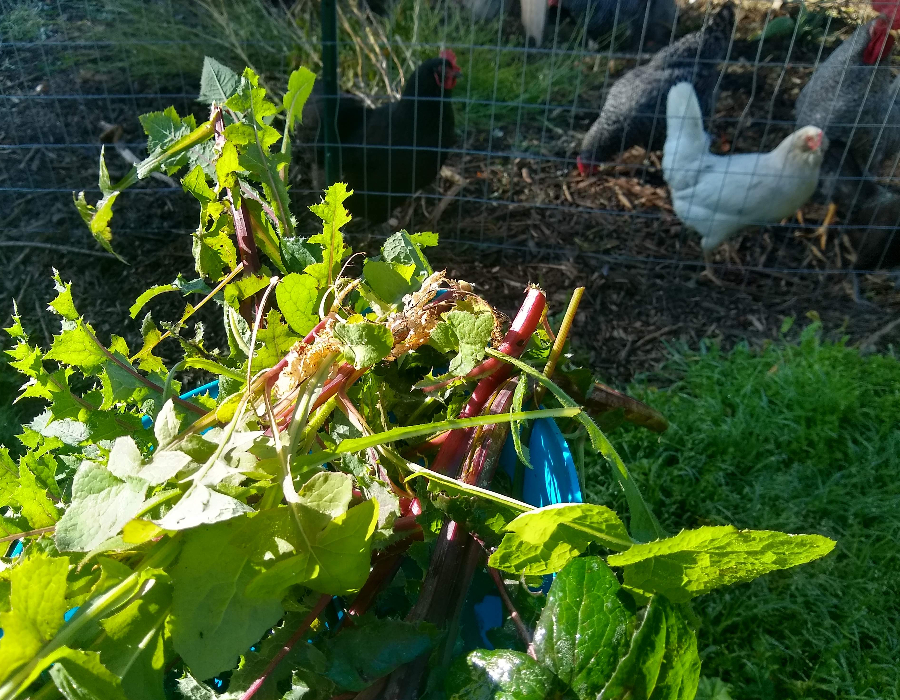
Some weeds are food for the family too. Nettle and mustard leaves we harvest and cook, for example.
This time of year is one of rapid and pervasive growth of weeds, but let’s use them and work with them instead of thinking we merely want to eliminate them.
Because I like you, I don’t allow ads on The Yard Posts. Because of your support, I can keep the posts coming. Thanks!
All of my Yard Posts are listed HERE

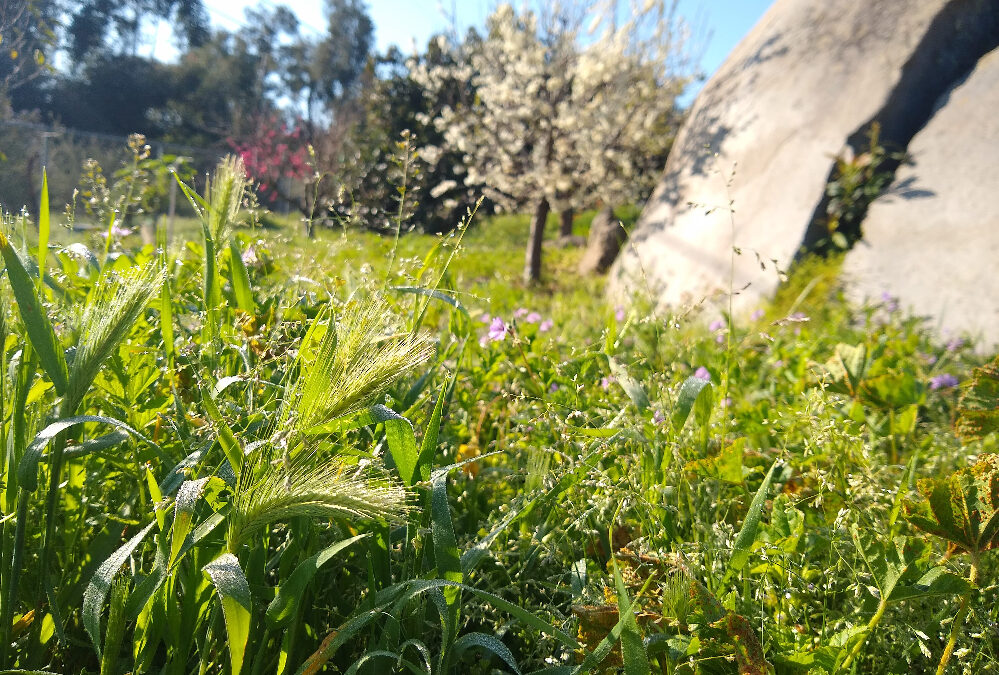


They say, “A weed is a plant in the wrong place.” I noticed birds eating the seeds of ragweed so I let them grow and noticed that bees like the flowers. I’ve since gotten into native plants including, thanks to you, a Joyce Coulter Ceanothus (a hybrid of natives) which I just learned is a legume that makes its own nitrogen.
Thanks for this article. I decided to let a steep slope do its thing this year and let the weeds/grasses that cover it in spring mingle with a bunch of broadcast native seeds. Loving how it is holding soil and it looks great.
Greg? Weeds?! My hubby says hope springs eternal as we are battling our way through our own backyard wilderness, ha ha! Anyway, thank you for this new perspective on weeds. Interesting that the little lady bugs might need wild plants. I also read somewhere that different weeds growing can indicate the condition of the soil? Happy weeding.
Thank you for sharing!